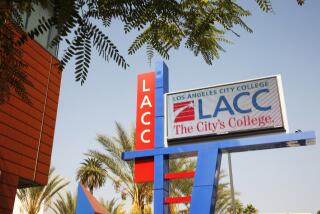Annenberg’s Challenge : Education: L.A.-area grant summons business and industry to support school improvement.
- Share via
Last December, Walter H. Annenberg offered a Christmas gift to the nation’s public elementary and secondary schools--a $500-million challenge grant to support reform efforts. The Los Angeles area has just received its own present, as former Ambassador Annenberg has earmarked $53 million of his original gift to spur reforms here.
Beyond the cash value, the Annenberg challenge is important because it represents a shrewd businessman’s willingness to invest in what many believe to be a shaky enterprise. When an entrepreneur of Walter Annenberg’s renown puts large amounts of his own money into our public schools, he raises their credibility in the eyes of mainstream American business and industry. Now is the time for the nation’s private sector to follow his lead and become fully engaged in the education of the nation’s children.
Many citizens feel that the education of children should be left to government agencies or local school districts. However, sometimes the most effective role for those bureaucracies to play in the area of school reform is simply to get out of the way.
When parents, teachers, civic leaders, governments, businesses and neighbors are motivated to work together for the sake of children, a true educational community is established. And such a community can overcome many of the obstacles that now stand in the way of the education of those children. The Annenberg challenge offers the kind of financial carrot that can begin to pull these groups together to provide stability and opportunity for the next generation.
The shrewdness of the Annenberg challenge--so named because private and public organizations are challenged to provide matching funds--is that it is designed to support reform movements that are already budding in so many parts of the United States. Rather than create yet another approach to reform, Annenberg is rewarding those approaches that have already demonstrated the greatest promise.
Experience tells us there is no single prescription for our schools’ ills. Different communities will need to address different concerns in different ways. But the best solutions generally share two traits: an ability to bring disparate groups together as stake holders in a common enterprise, and a willingness to allow market forces to reward quality and promote innovation and excellence.
The kind of challenge that Walter Annenberg has made to the rest of us is not merely a financial one. It is also a moral one. The time has arrived for each of us, regardless of whether we have children enrolled in public schools, to respond to Annenberg’s challenge and make our own contributions to society’s overriding mission: the equipping of our youngest citizens to face successfully a demanding and uncertain future.
More to Read
Sign up for Essential California
The most important California stories and recommendations in your inbox every morning.
You may occasionally receive promotional content from the Los Angeles Times.













